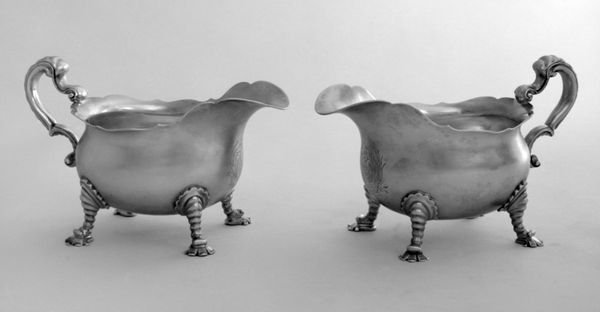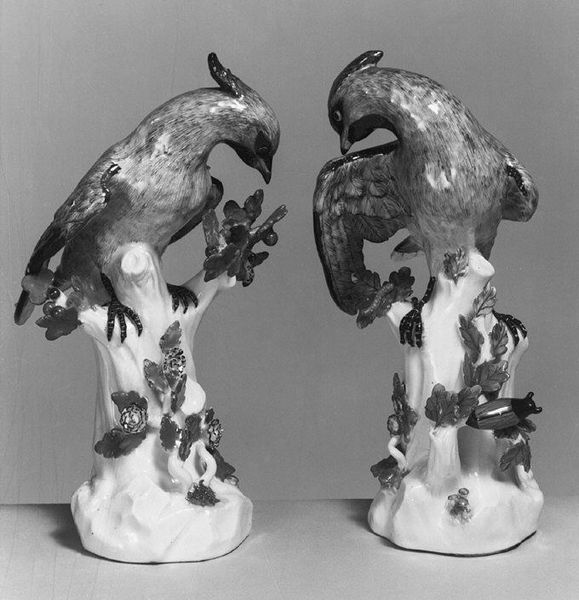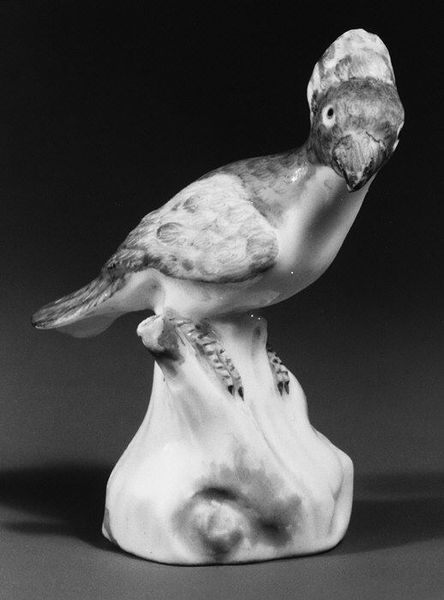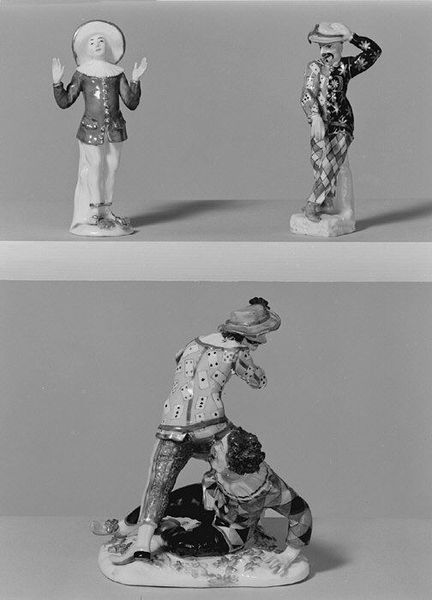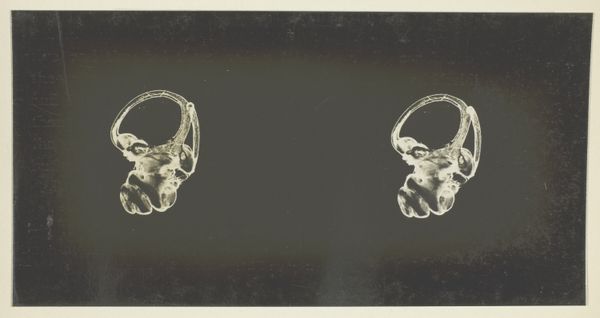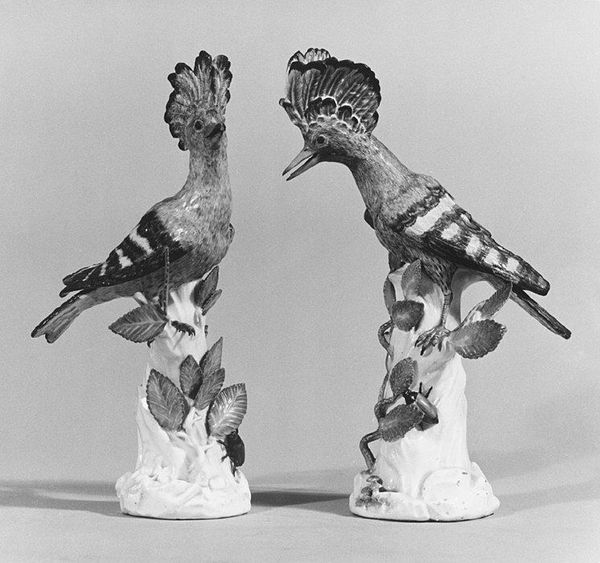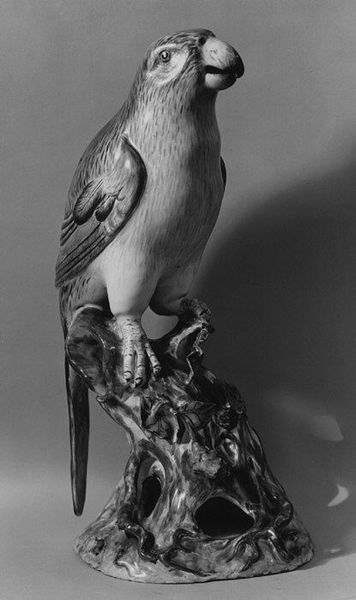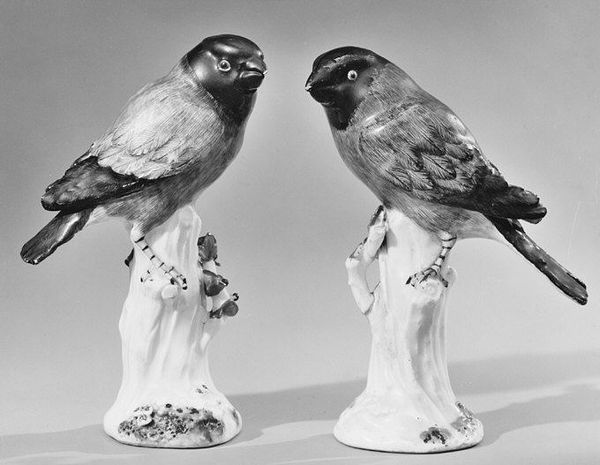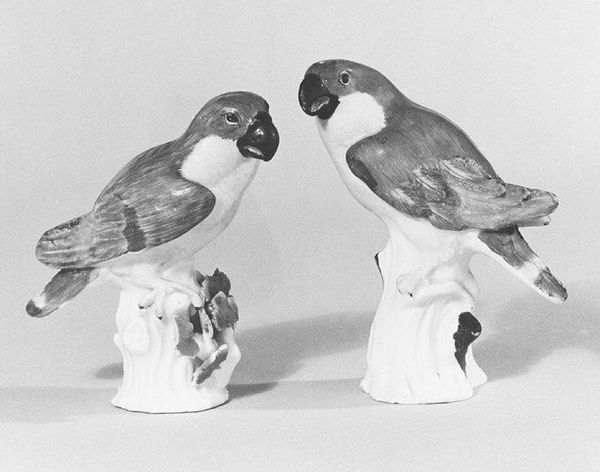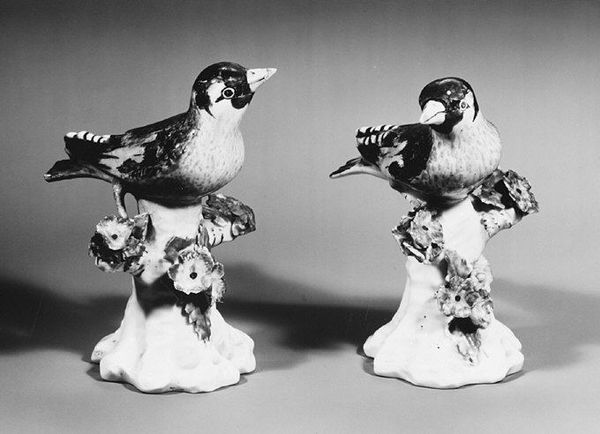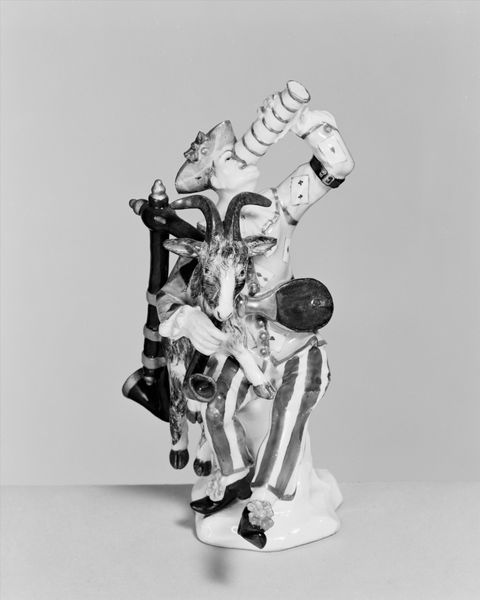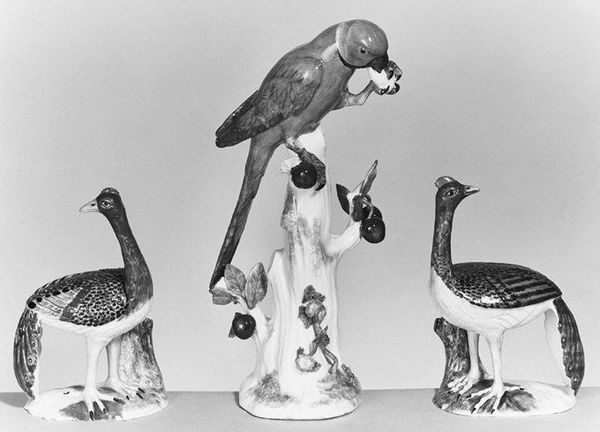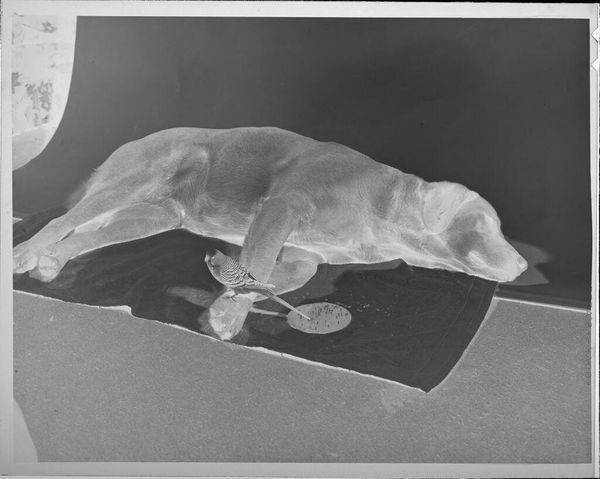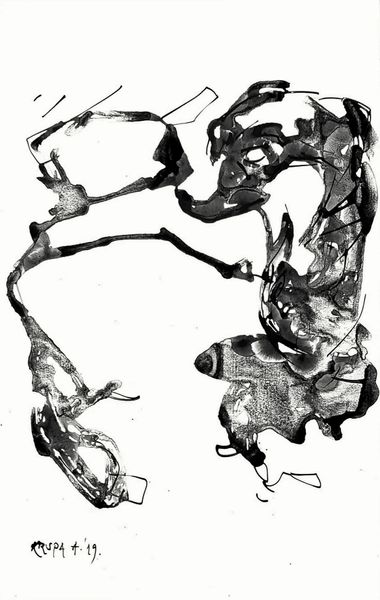
ceramic, porcelain, sculpture
#
sculpture
#
ceramic
#
porcelain
#
sculpture
#
decorative-art
#
rococo
Dimensions: Overall: 3 1/8 × 3 3/4 × 6 1/8 in. (7.9 × 9.5 × 15.6 cm)
Copyright: Public Domain
Curator: I find myself immediately drawn to the textural contrasts; the smooth, glossy porcelain juxtaposed with the seemingly random splatters across the turtle's carapace. Editor: Here we have a pair of turtle-shaped boxes crafted from porcelain, dating back to between 1725 and 1727, creations of the Meissen Manufactory. You can see them here at the Metropolitan Museum of Art. Curator: The Rococo influence is so evident—that playful departure from rigid symmetry into something more organic and whimsical. The lines of the shell are softened and stylized; not so much naturalistic as they are expressive of movement, a sense of luxurious, carefree playfulness. Editor: Indeed. One must remember the context: porcelain at this time was an incredibly prized material. To form it into these turtles implies a considerable skill and, given they are boxes, also hints at an aristocratic consumer, someone wanting luxurious objects that were not merely decorative but functional. Consider also the working conditions: these weren't solitary artists, but craftspeople working within the specific guild system of the time. Curator: I agree. The very smoothness speaks volumes. One could draw attention to how light refracts from that surface, giving the piece an almost ephemeral quality, defying the heavy, earthen origins of the materials. Editor: The very materiality, the delicate yet strong porcelain itself, becomes a commentary on value and skill, reflecting the economic and social structures that enabled their creation. Curator: Absolutely. These boxes transform the humble turtle into an object of opulent beauty. Editor: I think viewing art as intrinsically linked to the labor and context surrounding its making can unlock powerful new appreciations for both process and outcome. Curator: And considering how carefully placed those decorations had to be, that intentional randomness reveals more than if they had been ordered in any way! It speaks volumes. Editor: So the next time you encounter a work, consider not just its formal composition, but also how the circumstances of its production, and the hands that shaped it, imbued it with layers of meaning. Curator: Precisely! And that's the beauty of exploring these artistic objects! They reveal a dialogue.
Comments
No comments
Be the first to comment and join the conversation on the ultimate creative platform.
